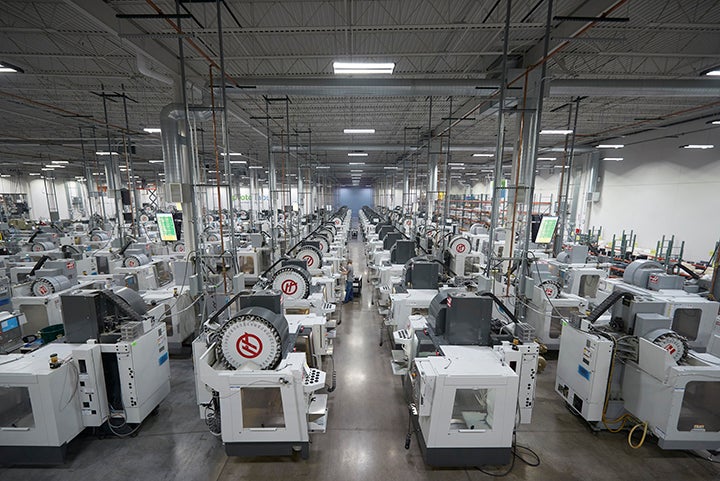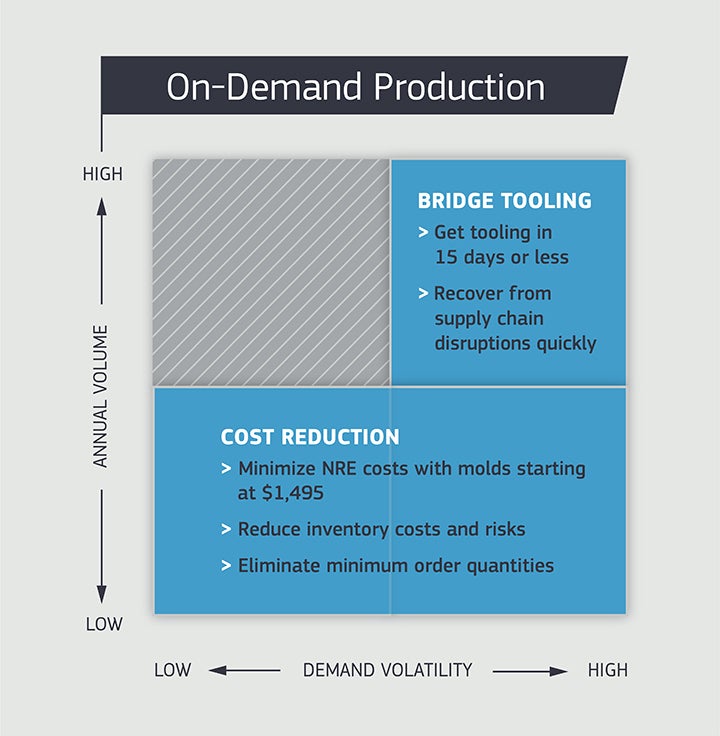After Independence LED returned its manufacturing operations back to the U.S. from China, the company’s chairman and CEO described the move as “the best decision my company has ever made.” And in 2016, companies returned more manufacturing jobs to the U.S. than sent them offshore for the first time in decades.
Certainly, these moves – known as “reshoring” – can generate goodwill toward a company. But they also often make smart financial sense. It’s the result of a growing focus on total cost of ownership (TCO). In the case of Independence LED, for example, the company utilized advanced automation and located its production closer to customers to help lower its TCO.
TCO considers the direct and indirect costs of acquiring and using a part or piece of equipment throughout its life cycle. It looks beyond mere purchase price of an item to also take into account additional costs associated with it, such as shipping and logistics, inventory, installation, operation, maintenance, and end-of-life retirement or replacement.
For this reason, TCO can provide a more complete picture of costs — and a more accurate indicator of ROI — than simply looking at the upfront cost.
More manufacturers began evaluating TCO as the economy tightened and, more recently, as financing took a more prominent role in companies’ purchasing and product-development decisions. Now, even the U.S. Department of Commerce is actively encouraging companies to consider TCO to help bring manufacturing back to the U.S., such as with its Assess Costs Everywhere (ACE) initiative.
As more companies use TCO to drive their production and supply-chain decisions, new approaches to manufacturing that can help drive down long-term costs are taking on a new level of significance. A prime example is on-demand manufacturing.
Faster Parts, Lower TCO

On-demand manufacturing builds on previous procurement and supply-chain concepts, including just-in-time manufacturing and lean manufacturing. Its goal is simple: produce parts as they’re needed, in the exact quantities needed, and do so repeatedly and cost-effectively. This typically yields lower total production costs as it improves supply-chain efficiency while reducing inventory and other administrative supply-chain costs.
For example, on-demand manufacturing allows companies to continue using the same supplier as they move their parts or products from prototyping into low-volume production. This can help reduce the cost and complexity of working with multiple vendors. Additionally, an on-demand supplier with the scale and capabilities to quickly ramp up production can help companies improve on-time performance.
On-demand manufacturing also gives companies the flexibility to purchase parts in only the quantities they need at a given time. This can reduce inventory costs and help them respond accordingly to changes in demand, so they’re not tied to production forecasts. Should demand increase, companies can quickly order parts, thus avoiding the risk of lost sales opportunities because of stock outages or long lead times.

And while the purchase price of a part from an on-demand supplier may be more expensive, the supplier’s use of cost-effective tooling – and ability to improve supply-chain agility – can ultimately create better value for production volumes in the tens of thousands per year compared to the larger capital expense involved in working with a traditional injection molding company.
When On-Demand Becomes in Demand
As more companies adopt a TCO mindset and continue to focus on bringing production closer to where the demand is, they should examine how on-demand manufacturing can improve their economics. Consolidating vendors for low-volume production, boosting time to market and on-time performance, reducing inventories, and minimizing supply-chain risks all offer long-term cost savings that shouldn’t be ignored.
Additionally, on-demand manufacturing supports the just-in-time requirements of shorter product life cycles and the democratization of mass customization. This means that more and more companies should and will adopt on-demand manufacturing to enable the changing business models required in this new era of faster product launches and greater personalization.
